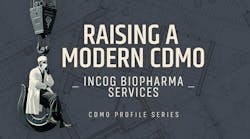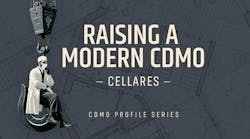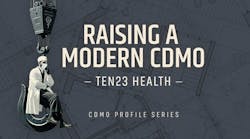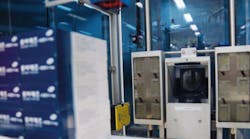First part of my revelation—an article just caught my eye: a company was “in negotiation” with FDA about production problems with some products. What was the resolution? Production was moved from India to New Jersey. So much for the “savings” of outsourcing.
A second part of the picture was an experience with a client of mine (overseas) who wanted to start doing QbD (Quality by Design) but not PAT (Process Analytical Technology) for control. (To paraphrase my friend Ali Afnan, running a process without real-time control is like driving to work with your eyes closed: you know where you’re headed, but what’s to stop you from going in a ditch on your way?) When I asked why no PAT, they told me that the actual production was being done by another company in another country. AND, they were having difficulty convincing the contract producer to purchase the control instruments. And if my client were to purchase the instruments, there was no way to prevent the contract partner from using them on another company’s products. My client feared that it would potentially be subsidizing its competition.
Add to these minor problems the purchasing of raw materials from another continent. (Is it “greener” to ship from 5,000 miles away rather than 400?) We seem to forget that, before the Pure Food and Drug Acts of the early 20th century, RM suppliers and food/drug makers in the U.S. and Europe were manufacturing products unchecked. You want blue candy? Just add copper sulfate. Red candy? Try a mercury salt. The use of ethylene glycol (and numerous deaths) finally brought about legislation to protect the public. So, we have almost 100 years of (legal) tradition and precedents behind raw material and finished product fabrication under FDA and EMA (as well as Canada and Japan).
That means, if I were to order a material, say heparin, from any U.S. state or EU country, I would know it was made under scrutiny of one government agency or another. Of course, “stuff” still happens, but it is the exception rather than the rule. And, even with these controls, products are still destroyed, reworked, or, least happy case, recalled.
What happens when a country does not have a century of experience with safety and purity controls? Let’s ask another question first: Where do most counterfeits (drug and non-drug products) come from? Which country has a history of outright stating that it would not recognize the copyright and patents of the West? Hint: The country where most of our products are now fabricated. (In fact, super-computers that were not allowed to be sold to China a decade ago are now being made there. Did I miss the NY Times announcement that China was now in NATO?)
From a practical point of view, what does all this mean? Let’s take the heparin “incident” as an example. Other than the deaths and recalls (translating into critical shortages), the cost of analysis has skyrocketed. The compendial tests, previously applied, needed to be scrapped. Why? The tests were based on the assumption that the suppliers of the material were acting in good faith and the tests were only to ascertain strength of the active. But with the adulteration of the heparin with over-sulfated chondroitin, the USP, FDA, and numerous research institutions have had to scramble for more specific tests.
The recommendations included capillary electrophoresis, followed by 2-D NMR. Now, rather than a simple bio-test, manufacturers of the final product need to apply time-consuming and very, very specialized tests. (A multi-megaHertz NMR is not only VERY expensive, but would require liquid helium for the magnets and liquid nitrogen to slow the loss of the helium. The magnetic field also demands a separate room and, of course, no workers with pacemakers or metallic implants are allowed.)
So, the question that bothers me is, how much are we saving by outsourcing? If we purchase our raw materials and APIs from “overseas,” we will need to do many more tests, since it has been shown that the FDA is stretched waaaay too far to provide site inspections in a timely manner. As far as final products, we “save money” by taking out 1950s manufacturing methods and, instead of updating to QbD and PAT, we outsource to a country where labor costs are low enough to perpetuate the outmoded manufacturing practices.
As collateral damage, the manner in which companies are working towards maintaining their profit margins is to close plants and lay off workers. The bad news then is that, even if a company wishes to develop QbD/PAT techniques, it finds itself short of resources: trained people, hardware, lab space, and production resources. So, what would have cost a fair amount of money before, now will cost a lot of money to accomplish. Good thing we saved the money . . . we’ll need it now.





